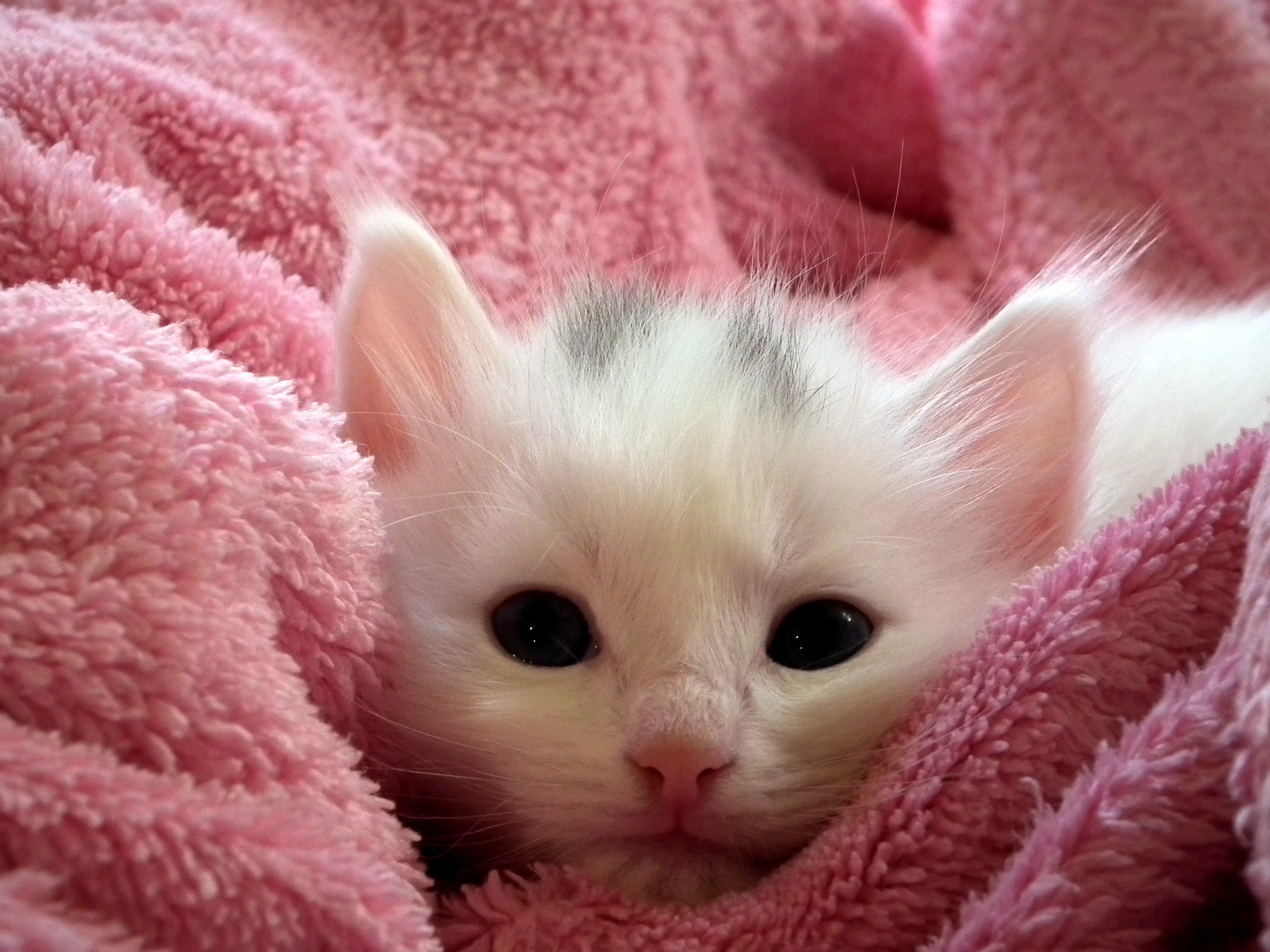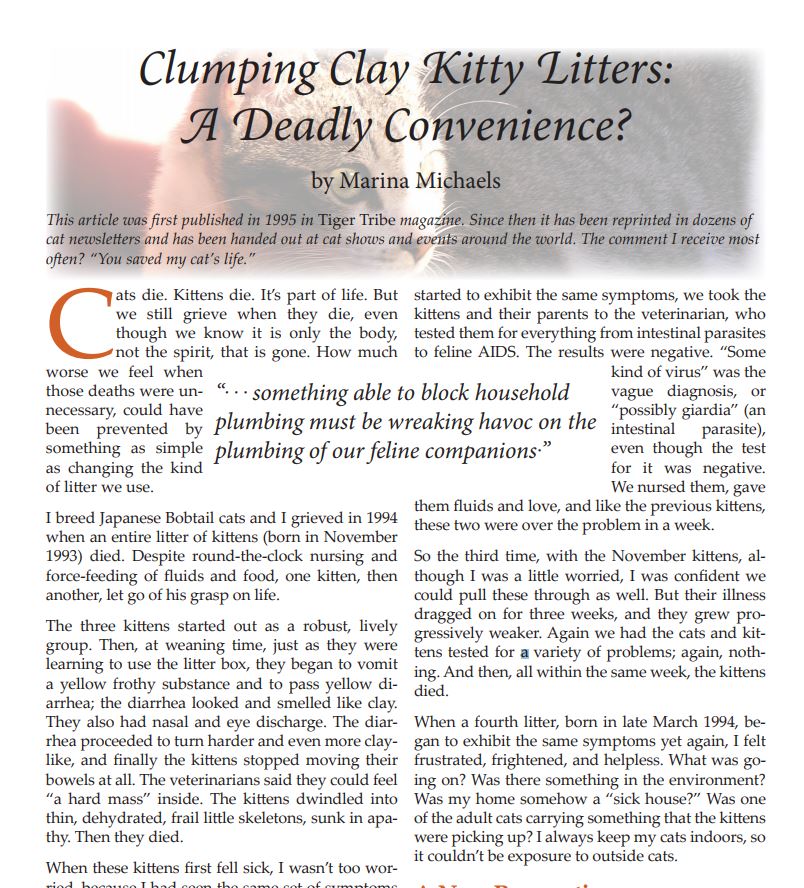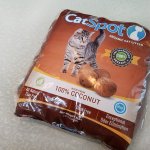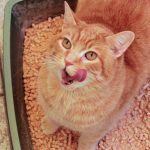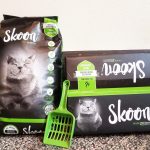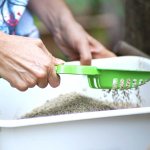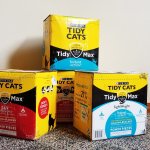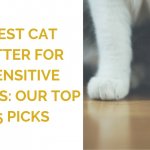Is Clumping Clay Cat Litter Bad for Kittens?
Last Updated on
Kittens are like human babies – these newcomers to the world are perpetual explorers. They use all of their senses to build a catalog of this new world and don’t hesitate to use their mouths as tools in this discovery process. Not yet able to elegantly differentiate between what does and doesn’t belong in their mouths, young animals are apt to eat things they shouldn’t. And that includes kitty litter. Sodium bentonite clay swells up to 15 times its original size when damp, so when in the moist environment of your kittens’ body, this clay can grow to a mass that could wreak havoc on your cat’s health.
The best safe, healthy cat litter for kittens:
Marina Michaels of The Lighthouse Online and Catmom.com has created one of the most memorable and compelling arguments against the use of clumping clay litter for kittens.
“…something able to block household plumbing must be wreaking havoc on the plumbing of our feline companions.”
In case you don’t like clicking links and would like a summary of Marina’s experience, here’s a brief sketch of what she and her kittens went through:
Marina, a Japanese Bobtail breeder, watched kitten after kitten develop the same series of symptoms. At weaning time, as the kittens were starting to use the litter box, they would start vomiting a frothy yellow liquid and passing yellow diarrhea. These initial symptoms were accompanied by eye and nose discharge. The diarrhea firmed up, becoming increasingly clay-like, before the kittens ceased to have any bowel movements whatsoever.
The kittens were sick, frail, and wasting away. Veterinarians could detect a “hard mass” in their intestinal regions, but testing was inconclusive. No one knew why all of these kittens were dying.
Eventually, Marina identified the clumping clay litter as the culprit. Recall that the symptoms began at around the same time that the kittens stated to use the litter box. But that was only the first clue.
The second was far more graphic. The sick kittens’ stool had the same consistency and odor as the clay litter. What’s more, it was the same color. All signs pointed towards the clumping clay cat litter.
While adult cats face some of the same risks that kittens do, their larger bodies make them less sensitive.
Click here to view or download an illustrated PDF of this story.
I won’t exaggerate the risk.
Many kittens can use clumping clay litter without any health problems. Consuming a small amount of this litter won’t harm them at all – the clay will pass straight through their little systems and right back to the box from whence it came.
No clinical studies have demonstrated a correlation between clumping clay litter and these types of health problems.
But it can be hard to trust some of the people who are telling us that this litter is completely safe.
Here’s an unsettling reassurance from Arm & Hammer, who sells clumping clay cat litter:
“While rumors have suggested that scoopable litters can cause health problems in cats, we are unaware of any actual incidents. Often cats that are sick will eat their litter. Pet owners will sometimes see this and attribute the illness to consumption of the litter, when in fact eating the litter could be a symptom of an existing illness.
We surveyed hundreds of vets and consulted with our own veterinary advisor, and none of these medical practitioners had encountered a case involving digestive problems caused by scoopable litters. To our knowledge, there is no research that indicates scoopable litter causes any health problems.”
Interesting.
At this point, you can’t believably argue that it’s not harmful for cats to eat cat litter. If there wasn’t at least a minor health risk, would cat litter labels warn you to never allow your cat to eat the litter?
While, as I’ll mention again shortly, pica (the consumption of non-food substances) is associated with illnesses in cats, this doesn’t quite seem to explain some of the symptoms we’re seeing in cats who, according to rumors, got sick from eating cat litter.
While the leading experts in the mainstream cat care world are largely silent or dismissive of this issue, the anecdotal evidence is abundant and should raise some very serious questions.
Who is in danger?
A quick Google search makes the popular beliefs on this topic obvious: kittens and their tiny bodies are both more likely to ingest cat litter and more susceptible to the effects of having a dehydrating mass of clay within their intestines. It’s recommended that you use a non-clumping litter for the first four months of your kitten’s life.
Frisky kittens who spend a lot of time playing in their little “sandbox” can pick up considerable quantities of litter and will ingest the particles during their next grooming session.
Of course, you’ll have to pardon the cliche – but curious kittens will deal with more problems.
While most cats possess more good sense than the average human, some kittens don’t know what they shouldn’t be eating. If your kitten is on the silly side, you might find them noshing on their litter just to see what it tastes like. Lastly, some kittens may have pica – this is when nutrient deficiencies lead to the consumption of non-food substances. As you’ve guessed, cat litter is a popular snack for kittens and cats with pica.
Obviously, this is a larger health issue that demands deeper investigation, but the message is clear.
Kittens can, may, and do eat cat litter.
When that litter is made from ingredients carefully designed to swell up to 15 times its original mass when in contact with liquid, it’s obvious that it doesn’t belong inside of your kitten’s body.
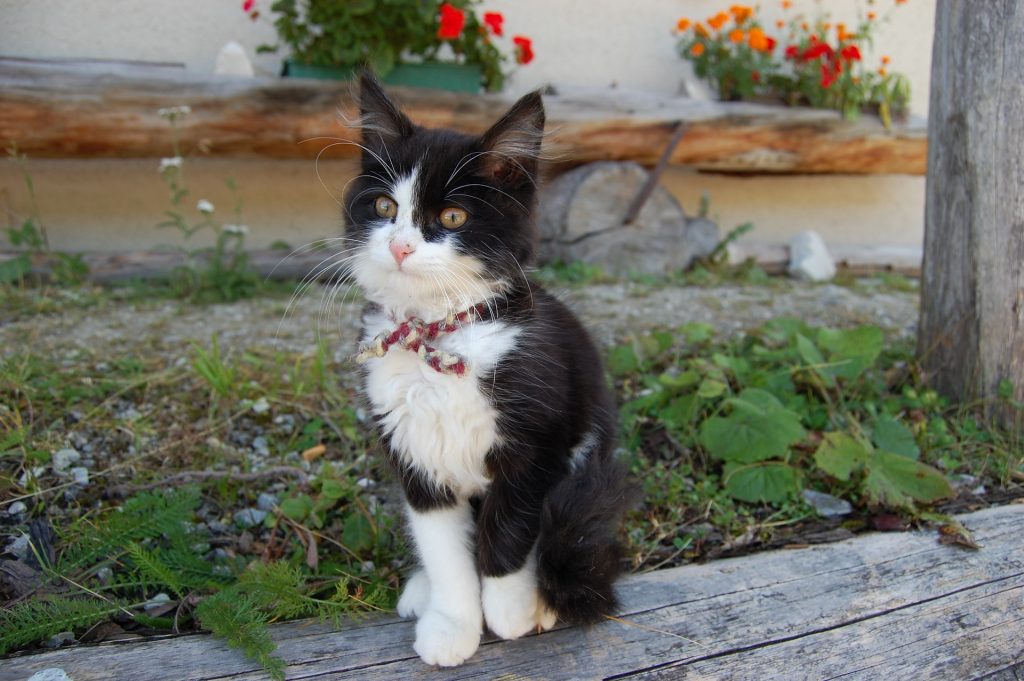
What’s the best cat litter for kittens?
Fortunately, you have plenty of options.
The best cat litter for kittens is non-clumping litter that is unlikely to stick to their paws when they enter the litter box. This means that although cats prefer litter with fine granules, a pellet-style or type with large chunks of clay is safer for kittens.
Although at this date, there are no non-clay litters that consistently offer the odor management and cat appeal that clay litter can, some kittens don’t mind using “alternative” litters made from biodegradable ingredients like pine and recycled newspaper.
A word of warning: corn litter is a very common target for aflatoxin mold, which can lead to serious health complications. While corn litters like World’s Best Cat Litter are a popular choice, we can’t recommend corn cob cat litter for this reason.

